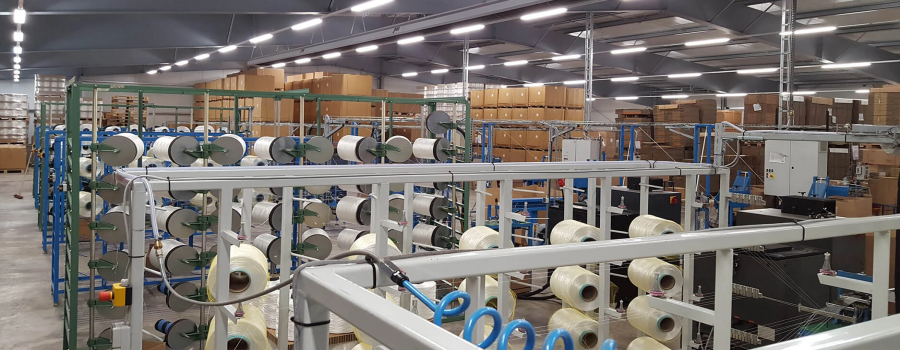In the ever-evolving world of manufacturing and packaging, efficiency and versatility are paramount. The Composite Strap Extrusion Line represents a significant advancement in this realm, combining cutting-edge technology with practical applications to meet the diverse needs of industries ranging from logistics to construction. This article delves into the key features of composite strap extrusion lines, highlighting their efficiency, adaptability, and overall impact on production processes.
Understanding Composite Straps
Before exploring the extrusion line itself, it's essential to understand what composite straps are. Composite straps are materials made from a combination of different substances, typically blending thermoplastics with reinforcing fibers like polypropylene and polyester. This unique composition offers superior strength, flexibility, and resistance to environmental factors, making them an ideal choice for various packaging applications.
The Extrusion Process
At the heart of the composite strap extrusion line is the extrusion process, which transforms raw materials into finished products. The process begins with the feeding of raw composite materials into an extruder. Inside the extruder, these materials are heated and mixed until they reach a molten state. The homogeneous blend is then forced through a die, forming continuous straps that are cooled and cut to the desired length.
This process is not only efficient in terms of production speed but also allows for high customization. Manufacturers can easily adjust the composition of the materials and the design of the straps to meet specific requirements, making the extrusion line versatile enough to cater to different applications.

Key Features of Composite Strap Extrusion Lines
1. **High Production Efficiency**
One of the standout features of composite strap extrusion lines is their ability to produce large quantities of straps in a short amount of time. This efficiency reduces production costs and allows manufacturers to meet the increasing demands of the market without compromising on quality.
2. **Energy Efficiency**
In addition to speed, contemporary extrusion lines are engineered to be energy efficient. They utilize advanced technologies, such as servo-driven motors and optimized heating systems, to minimize energy consumption. By reducing energy costs, manufacturers can enhance their profitability while also contributing to sustainability efforts.
3. **Versatile Applications**
Composite strap extrusion lines cater to a wide range of industries, including packaging, construction, and automotive. In packaging, these straps are used for bundling and securing goods, providing a robust solution for heavy-duty applications. In construction, composite straps are utilized for reinforcing materials, demonstrating their adaptability across various sectors.
4. **Customizability**
The flexibility of composite strap extrusion lines allows for significant customization. Manufacturers can alter the dimensions, colors, and properties of the straps to suit specific customer needs. Whether it's creating straps with varying tensile strengths or developing straps with specific colors for branding purposes, the extrusion process can be tailored accordingly.
5. **Enhanced Product Quality**
Quality control is critical in manufacturing, and composite strap extrusion lines are equipped with advanced monitoring systems that ensure consistent product quality. These systems track parameters such as temperature, pressure, and material feed rates, enabling operators to make real-time adjustments. This level of precision results in high-quality straps that meet industry standards.

6. **Reduced Waste**
Modern extrusion technology minimizes material waste during production. The ability to recycle scrap material back into the extrusion process ensures that manufacturers can optimize their resource usage. This not only benefits the environment but also reduces costs associated with raw material procurement.
7. **Automation and Smart Technology**
The integration of automation and smart technology into composite strap extrusion lines marks a significant leap forward in efficiency. Automated systems facilitate smoother operations, from material handling to quality inspection. Smart sensors and data analytics allow for predictive maintenance, reducing downtime and enhancing overall productivity.
8. **Safety Features**
Safety is a paramount concern in any manufacturing environment. Composite strap extrusion lines are designed with various safety features, including emergency shutdown systems, safety guards, and ergonomic controls. These features not only protect operators but also ensure that the production process runs smoothly and efficiently.
Conclusion
The Composite Strap Extrusion Line epitomizes the intersection of efficiency and versatility in modern manufacturing. With its ability to produce high-quality composite straps quickly and adaptably, it meets the diverse needs of various industries while maintaining cost-effectiveness. As technology continues to advance, these extrusion lines will likely evolve further, paving the way for even greater innovations in packaging and materials engineering.
By investing in composite strap extrusion lines, manufacturers can enhance their operational efficiency, reduce waste, and produce versatile products that meet the demands of today’s dynamic market. As industries strive for sustainability and innovation, the importance of such technologies cannot be overstated, making the composite strap extrusion line an essential asset for any forward-thinking manufacturing operation.